The Los Andes Private Nature Reserve is a lovely, lovely place but it’s a bit off the beaten path. One does not accidentally stumble into paradise but rather pursues it purposefully. Our group certainly did; our purpose resided high on a peak overlooking mist-shrouded fields of tea and quinine.
Two times in two days we ascended El Quetzal. El Quetzal was the name of both our target bird and the trail on which it was reliably found. The Resplendent Quetzal (Pharomachrus mocinno) holds an iconic place in Mesoamerican mythology and culture. In fact, this exquisite jade and ruby trogon endowed with a improbably long feathered train of a tail happens to be the national bird of Guatemala, not to mention the namesake of its currency, the quetzal. The resplendent one serves as an adept avian ambassador as every nature-minded visitor to Central America wants to see it. Few however go to the lengths we did to catch a glimpse.
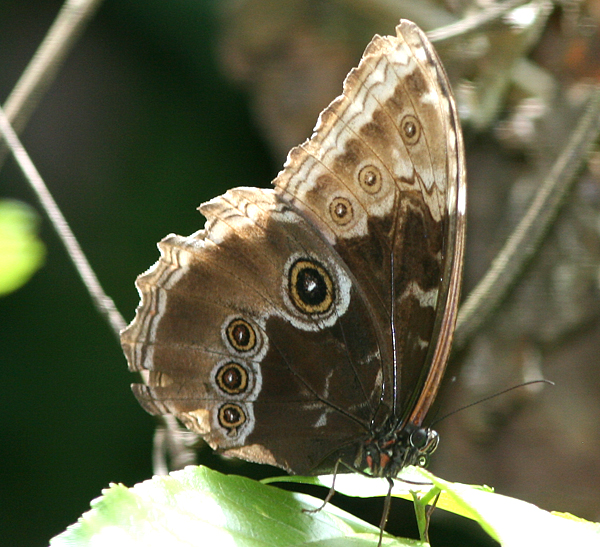
Blue Morpho Butterfly
Each assault on El Quetzal began by battling a crude rock-strewn cut road through many of Los Andes’ fields. These battles that left bruises as we clung to the steel bars enclosing the back of a pickup truck picking its painful way through deep ruts and along razor cliff edges. After thirty minutes or so of that, we attained the trailhead beyond which pristine cloud forest beckoned.
Our first afternoon attempt wasn’t particularly birdy. Our venerable local guide, Don Chús led us to the spot where he had seen our quarry that very morning but the quiet of the deep woods was unbroken by quetzal calls. Actually, we didn’t see much of anything other than a few Emerald Toucanets, Summer Tanagers, Greater Pewees, Gray-breasted Martins, and the typical tropical warblers. As usual, we heard far more than we saw of wrens, guands, and ridiculously raucous Spotted Wood-Quails. We also encountered plentiful Paraque, including one that almost took Birdchick’s head off. But the quetzal quest was a bust for everyone but Mel Pineda. Mel peeled off the group to wait at the truck only to stagger up a bit later, cryptically muttering, “I just saw a four-foot flying snake!” Would we be as fortunate the following day?
Our second attempt at El Quetzal took place just as dawn was reaching the peak. The cloud forest came alive as we climbed. Soon, birding began in earnest. Chestnut-capped Brush-Finch, Yellowish Flycatcher, Gray-breasted Wood Wren, and both Ruddy and Scaly-throated Foliage Gleaners made the scene. We encountered brilliantly colored birds like Elegant Euphonia and Blue-crowned Chlorophonia as well as more subtle sensations like Common Bush Tanager, Tropical Pewee, and my first Cassin’s Vireo.
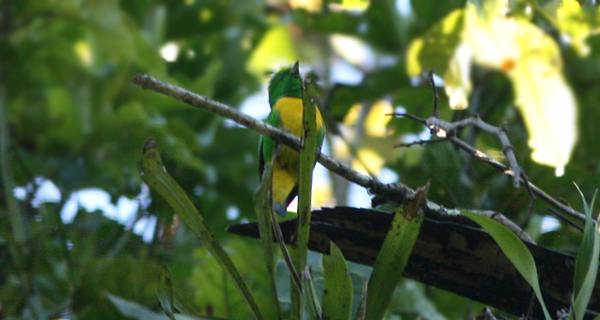
Blue-crowned Chlorophonia
Resplendent Quetzals were in the vicinity but their calls suggested an insurmountable distance between us and them. Before long, we began considering what other species we might seek out to hedge against a quetzal shut-out. Fortunately, the summit was solid for a bird that, in my opinion, was much more precious and exciting. The Azure-rumped or Cabanisi’s Tanager (Tangara cabanisi) is an endangered, highly restricted but locally common passerine. It is also, like the Horned Guan and Pink-headed Warbler, almost endemic to Guatemala, appearing also at high altitudes in the Sierra Madre de Chiapas of south-west Mexico. The Resplendent Quetzal, no disrespect intended, can be found all over Central America. I could accept not spotting the quetzal since I’m sure to have other opportunities to bask in its resplendence. The Azure-rumped Tanager, on the other hand, was a BIG DEAL BIRD that simply had to be seen ere we evacuated El Quetzal.
…and it was!
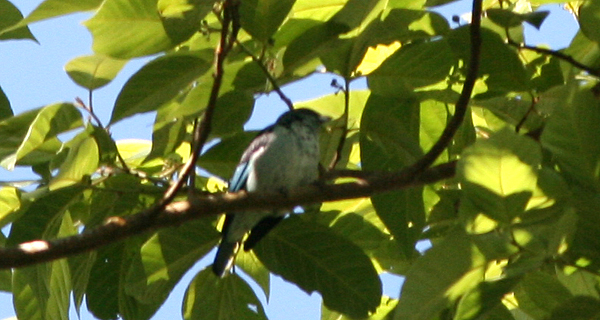
Azure-rumped Tanager
The Azure-rumped Tanager is a much bolder, better looking bird that field guides (or my meager photographs) give it credit for. Its sky blue stern may not be apparent as it feeds in the upper canopy but those black markings and flashes of azure and emerald lend it a beauty befitting its arboreal habitat. The tanager sightings were among the highlights of my entire memorable trip.
Another prize sighting, this one entirely unexpected, occurred when we observed what looked like a large football hopping silently up the trail ahead. This peculiar bird was none other than the Scaled Antpitta, a species even my veteran Neotrop guide colleagues grew weak in the knees over. Apparently this antpitta is much like Monty Python’s Spanish Inquisition; nobody expects it!
Speaking of unexpected, I never anticipated dipping on quetzal but that’s exactly what happened. The closest we got was a Collared Trogon, a cracker to be sure but nothing you’re going to name money after. I had no complaints though nor, I suspect, did anyone else in the group.
Two times we ascended El Quetzal in search of its namesake resident. Two times we descended without the quetzal but with a full freight of amazing experiences. Don’t be smug, oh resplendent one… there will be a third time!
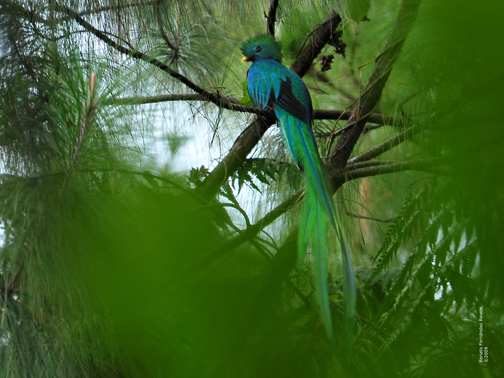
By the way, this is what we missed! Pretty cool, no?
Photo by Renato Fernández Ravelo



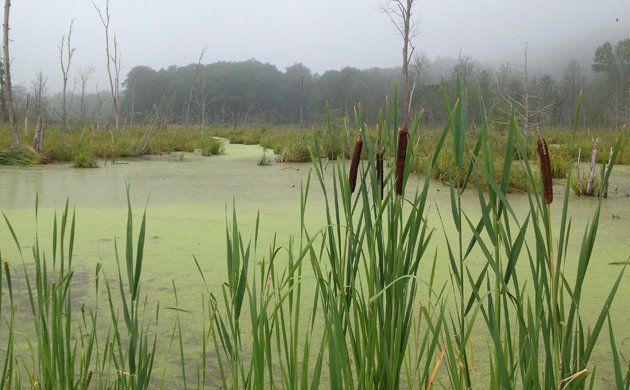

 New writers welcome – please contact us for details.
New writers welcome – please contact us for details.

















Mike, thanks for using my picture. The third time will come and we will be with you at Las Nubes. I’ll be going again this weekend and will let you know of our results.
Quetzal will do that to you, Saturday morning I went with a birder friend to look for quetzal in a nearby national park, we heard him twice real close but he was a no show.
on other occasions im birding for something else and get 3 or 4 quetzals on the same tree all singing and such….thats birding I guess
Renato, thanks for sharing that gorgeous photo. Good luck this weekend!
Danny, you’re exactly right. Sometimes the best part of birding is the thrill of the (non-lethal) hunt and the uncertainty of a sighting.
Quetzal is undeniably cool, but for my money that Chlorophonia isn’t far off in the “WOW” department. Not to mention any antpitta.
Whoah!- Azure-rumped Tanager (AKA Tanager a la Cabanis)- that there is a mega bird! Did quite well with the Antpitta too! Scaled is geographically widespread yet difficult to see almost everywhere.
Wow, El Quetzal is a beautiful bird one of the most pretty bird that i ever seems, even i from Guatemala but i haven’t seem the bird, but i have seems photos and is a bird to admired that because it has beautiful colors and also is a bird of freedom, however i left my country when the earthquake it in 1976,since than i haven’t been back,but i know i do love my beautiful Guatemala and also i admired El Quetzal. even here in United States the National bird is the eagle which is a beautiful eagle,but it doesn’t compare with El Quetzal the because of the colors it has.